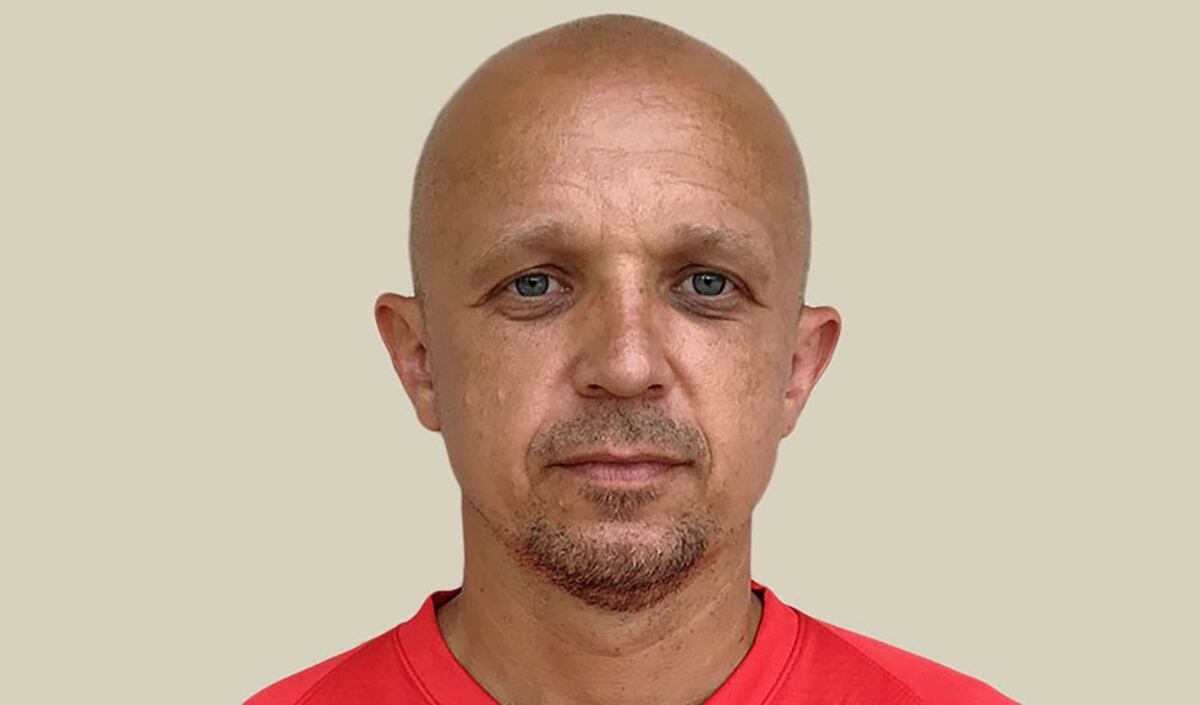You are viewing 1 of your 1 free articles
Attacking the second six-yard box
The aim of this session is to develop collaborative movement of attacking players in and around the penalty area, as well as working on the quality and variety of the final pass.
| Area | Use of a half-pitch |
| Equipment | Balls, cones, goals, mini-goals |
| No. of Players | Up to full squad |
| Session Time | Unopposed practice 15mins, Adding opposition defenders 25mins, Small-sided game 30mins |
The aim of this session is to develop collaborative movement of attacking players in and around the penalty area, as well as working on the quality and variety of the final pass. It’s a session that players love, from academy age right up to experienced senior players.
The blueprint gives the opportunity for coaches to work on combining movements of attacking players in order for them to be more productive in front of the opposition goal, and features lots of repetitions and a high success rate, which is good for players’ confidence.
Players work together in creating and taking the best scoring opportunities, fashioning space for themselves and their team mates, as well as building knowledge as to how to lose a marker.
Key factors in this session are sound understanding, cohesion, speed, precision and quality, and we would run it once a week (a day or two before a competitive match) in order to work on attacking play, and to build players’ confidence.
What do I get the players to do?
Unopposed practice (1a/1b)
1a
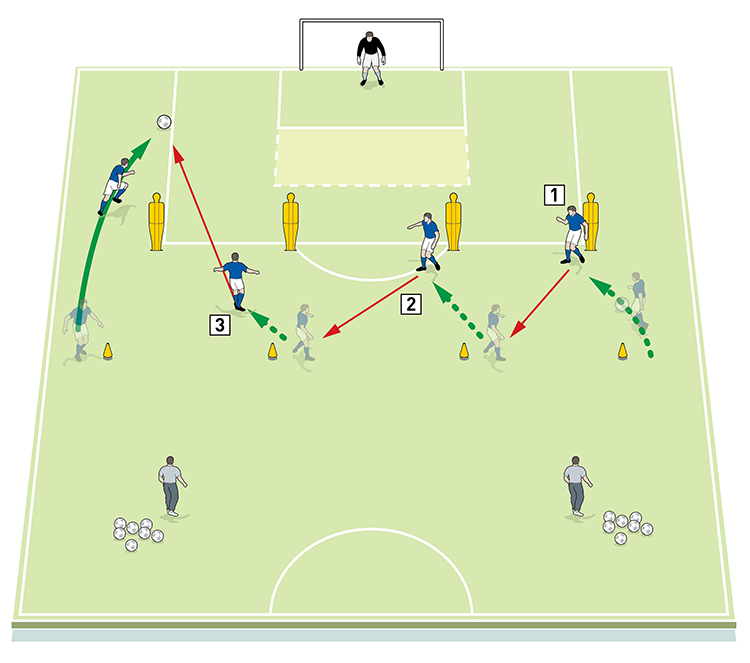
2. He passes on to player 3
3. Player 3 then slides the ball through to player 4, making the runner chase the pass
1b
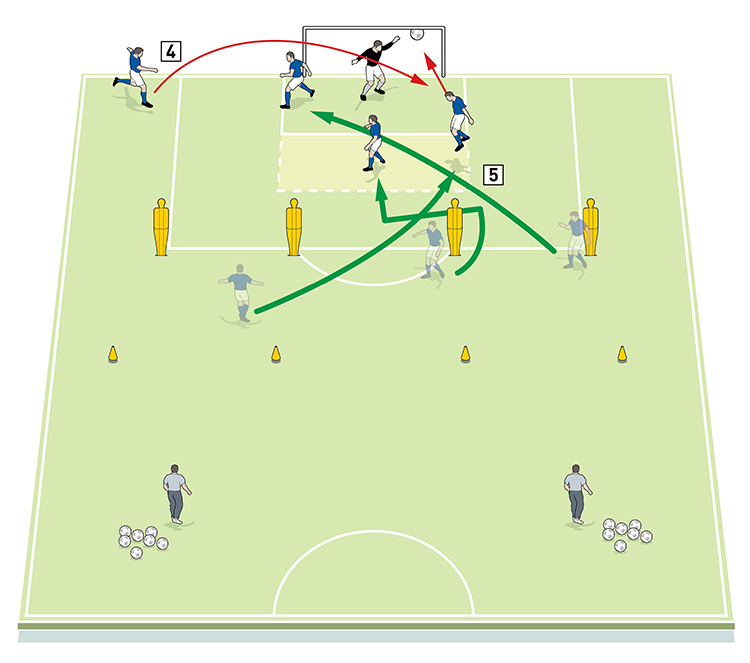
5. Working attackers make specific runs to meet the ball
In part one players work on movement and a final pass into an unopposed section of the area, namely the second six-yard box. The coach needs to work on ensuring good delivery from both flanks, and when satisfied with quality of individual and collective movements - final pass and finishing – the session progresses to the next stage (opposed).
What are the key things to look out for?
We are looking for good direction, timing, speed of runs, and for players to ‘observe, decide, execute’ with a good end product. Their attitude must be to arrive in that key area late and quick, with an injection of explosiveness, change of direction and pace, and with good timing.
Players must have a positive attitude, not to mention high levels of concentration. Yes there will be a lot of good play but plenty of mistakes as well, which is fine, providing that players regroup and focus immediately on the next play.
And delivery of the ball with precision is vital, notably in avoiding both the first defender and the keeper; so we’re looking for them to spot the gap and pick the free player. We run this for approximately 15 minutes.
How do I progress the practice?
To progress we introduce one, two, three and finally four defenders, as shown (2). This approach gradually raises the level of difficulty for attacking players. With experienced professionals you start with two central defenders then introduce another two to complete the back four.
2
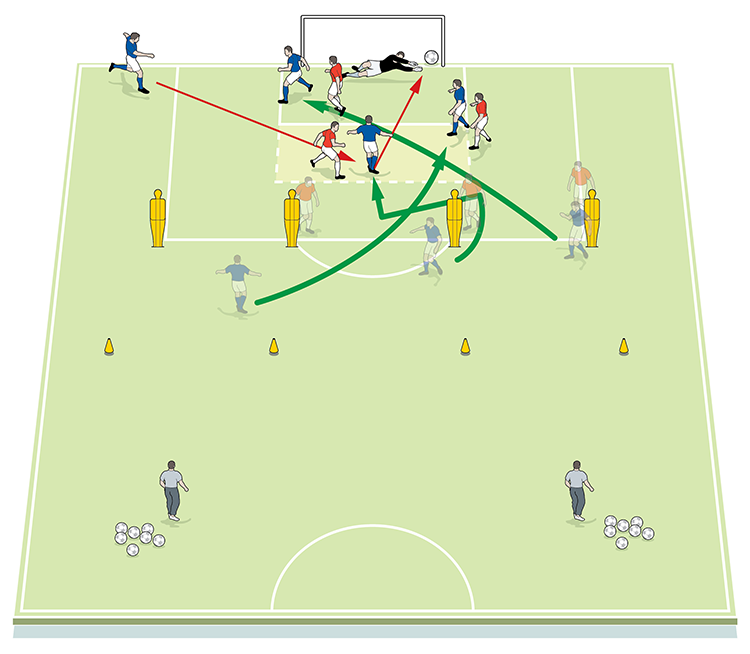
Another progression to this session will be introducing an overlapping full-back to create a 5v4 situation (3). These two progressions should total 25 minutes.
3
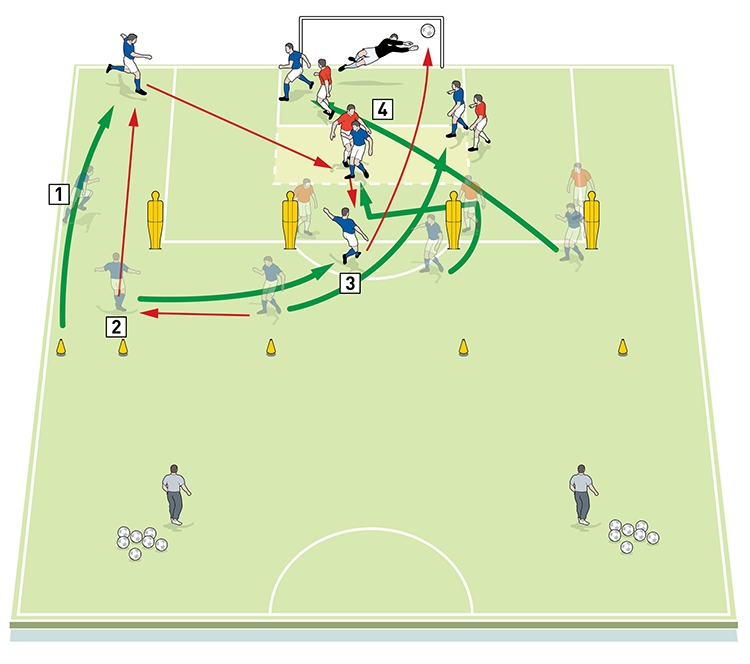
2. Now it’s player 4 who threads a pass down the flank
3. Player 4 then moves forward to the edge of the penalty area to create a 4v3
4. Here the initial attack is blocked and the ball is touched back to player 4
If defenders start losing focus or interest, the coach can introduce two small goals for them to attack if they gain possession of the ball, with the keeper supporting defenders in this situation.
How would you put this into a game situation?
For a game situation we set up with wide zones, with each team having two players in each, as shown (4). The start position for side players sees them in ‘safe zones’ in their attacking half of the pitch. The wide player can recover and defend against the opposition winger, but only after a ball has been passed to him. This will encourage the attacking player to play quicker.
4

After a cross has been delivered from the wide player, the winger from the other side can join in the play. The game situation should last 30 minutes.
Related Files
Editor's Picks
Deep runs in the final third
Using the goalkeeper in build-up play
Pressing principles
Intensive boxes drill with goals
Penetrating the final third
Creating and finishing
My philosophy
Pressing initiation
Compact team movement
Coaches' Testimonials

Alan Pardew

Arsène Wenger

Brendan Rodgers

Carlos Carvalhal

José Mourinho

Jürgen Klopp

Pep Guardiola

Roy Hodgson

Sir Alex Ferguson

Steven Gerrard
Coaches' Testimonials

Gerald Kearney, Downtown Las Vegas Soccer Club

Paul Butler, Florida, USA

Rick Shields, Springboro, USA

Tony Green, Pierrefonds Titans, Quebec, Canada
Join the world's leading coaches and managers and discover for yourself one of the best kept secrets in coaching. No other training tool on the planet is written or read by the calibre of names you’ll find in Elite Soccer.
In a recent survey 92% of subscribers said Elite Soccer makes them more confident, 89% said it makes them a more effective coach and 91% said it makes them more inspired.
Get Monthly Inspiration
All the latest techniques and approaches
Since 2010 Elite Soccer has given subscribers exclusive insight into the training ground practices of the world’s best coaches. Published in partnership with the League Managers Association we have unparalleled access to the leading lights in the English leagues, as well as a host of international managers.
Elite Soccer exclusively features sessions written by the coaches themselves. There are no observed sessions and no sessions “in the style of”, just first-hand advice delivered direct to you from the coach.
